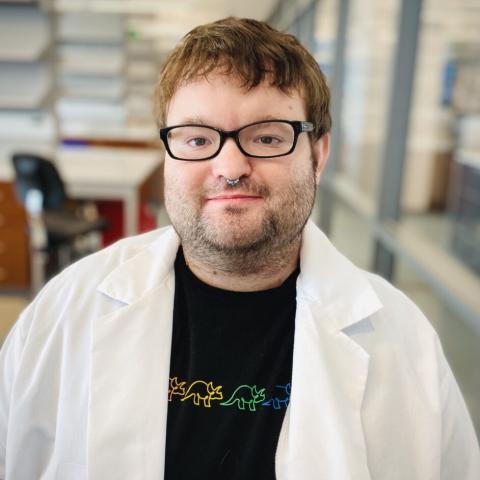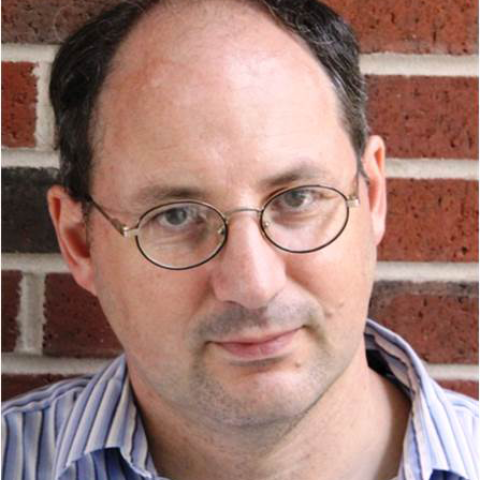Joseph Perry



Dr. Adegboyega “Yomi” Oyelere has received PhD from Brown University in 1998. Currently, he works as an associate professor in the School of Chemistry and Biochemistry at the Georgia Institute of Technology.

Anna Österholm is a Principal Research Scientist who has been at Georgia Tech since 2012. She earned her Ph.D. in analytical electrochemistry from Åbo Akademi University in Finland and has been active in the area of electroactive polymers for two decades. Her main research interest include probing structure-property relationships of conjugated organic molecules and polymers, organic electronics, electrochromism, solution processing of polymers, and conjugated polymer electrochemistry. Österholm has contributed to over 50 research articles, authored two book chapters on electrochromism, and holds co-inventorship on six patents in the area of electrochromic polymers and small molecules.

Our group is primarily a surface chemistry and physics group which focuses on the use of high-powered pulsed lasers, low-energy electron scattering, micro-plasmas, mass spectrometry and ultrahigh vacuum surface science techniques. We use this "tool-set" as well as some scattering theory to unravel the details of non-thermal processes occurring under a variety of non-equilibrium conditions. Our group is based upon an interdisciplinary approach and thus our research programs span the realm of fundamental investigations in molecular physics, surface physics and chemistry, bio-physics, bio-polymer formation under pre-biotic conditions as well as working in applied areas of relevance to analytical technique developments, atmospheric chemistry, catalysis and molecular hydrogen generation.
Surfaces and Interfaces; Catalysis; Advanced Characterization; Hydrogen; Nuclear

The questions that keep us up at night are: How does the immune system present and recognize antigens to combat disease? What are the molecular features involved in stimulating robust and specific immune responses? How can we exploit distinct features of immune recognition to develop new treatments for disease? Our research centers on answering these important questions. We focus on the CD1 family of major histocompatibility complex class I (MHC-I) related proteins, which present both self and foreign lipids to αβ, γδ, and natural killer T cells. Examples of CD1 complexes involved in the adaptive and innate immune response to human disease include those associated with lipids derived from cancerous cells (Leukemia, Carcinoma, Lymphoma, Melanoma), wasp/bee venom including yellowjackets of the genus Vespula who represent Georgia Tech's mascot Buzz (Hymenoptera venom allergy), bacterial pathogens (Mycobacterium tuberculosis - Tuberculosis, Borrelia burgdorferi - Lyme Disease, Pseudomonas aeruginosa - Pneumonia), viral pathogens (HSV-1 - Herpes, HBV - Hepatitis B), marine sponges, and self cells in autoimmune disease (Dermatitis, Psoriasis, Lysosomal Storage Disease). Recent studies have shown that CD1 can also associate with and present a much broader range of antigens, such as skin oils that lack a discernible hydrophilic head group, lipopeptides, and non-lipid small molecules. Unlike peptide antigen presentation by high polymorphic human MHC-I complexes for which therapeutics must be tailored to a patients genetic background, the non-polymorphic nature of CD1 means that lipid/CD1 molecules are attractive candidates for donor-unrestricted (i.e. universal and patient-haplotype independent) vaccines and immunotherapy treatments. Progress in the development of lipid/CD1 mediated therapies has been hindered by an incomplete understanding in several important features of the CD1 antigen processing and presentation pathway as well as a lack of structural information for clinically relevant lipid/CD1 complexes. We aim to address these knowledge gaps with our research.


Raquel Lieberman is the Sepcic-Pfeil Professor of Chemistry & Biochemistry at Georgia Tech. Her research program focuses on biophysical and structural characterization of proteins and the impact of disease-associated mutations on function or dysfunction (e.g. aggregation). Rooted in basic research, the long-term goal of her research program is to convert mechanistic discoveries into disease-modifying therapies.
A major research project in her lab is investigations of glaucoma-associated herocilin, which has been funded by NIH since March 2011. Her lab has made major strides toward detailed molecular understanding of herocilin structure, function, and disease pathogenesis. They have divulged similarities between herocilin-associated glaucoma and other protein misfolding disorders, particularly aherloid diseases. Cumulatively, their work is leading to the first disease-modifying glaucoma therapeutic.
Lieberman also has a track record in membrane enzymes dating back to her thesis work where she solved the first crystal structure of the copper-dependent particulate methane monooxygenase. During her postdoc she shifted focus to intramembrane aspartyl proteases (IAPs), particularly those involved in neurodegenerative disease like Alzheimer’s disease. In her independent lab she developed new proteomics-based assays to measure IAP proteolysis. The lab also collaborates with physicists at Oak Ridge National Labs to use neutron scattering to probe structure and lipids in solution. This work has been funded by NSF and NIH.
She serves on the Executive Council of the Protein Society and as an academic editor for PLoS Biology. She also serves as co-PI of the Department of Education GAANN program in Biochemistry & Biophysics at Georgia Tech and on the advisory committees in a variety of capacities.


Nuclear

Nicholas Hud was born and raised in Los Angeles, California. He received his B.S. degree in physics from Loyola Marymount University. His Ph.D. was conferred by the University of California, Davis for physical investigations of DNA condensation by protamine. From 1992-1995 he was a postdoctoral fellow in the biology and biotechnology research program at Lawrence Livermore National Laboratory with Rod Balhorn. From 1995-1998 he was an NIH postdoctoral fellow in the Molecular Biology Institute at UCLA where he worked with Juli Feigon and Frank A. L. Anet on the application of NMR spectroscopy to the study of DNA-cation interactions. Hud joined the faculty at Georgia Tech as an assistant professor in 1999 and was promoted to full professor in 2008. He has been visiting professor of chemistry at the National NMR Center in Slovenia, and at Imperial College London. Hud currently serves as PI of the NSF Center for Chemical Evolution, as chair of the biochemistry division of the School of Chemistry and Biochemistry, as co-director of the Georgia Tech-Emory University Center for Fundamental and Applied Molecular Evolution (FAME), and as associate director of the Petit Institute for Bioengineering and Bioscience.